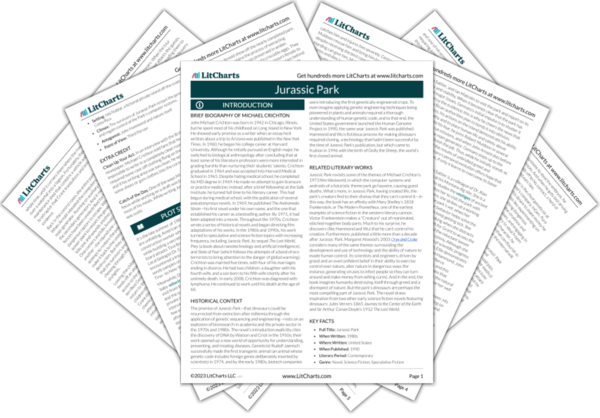While the ability to control Hatchery Room’s atmosphere through climate control technologies suggests humans’ ability to control the world around them, atmospheric changes of millennia also point to the incredible changes that have occurred over the history of the earth. The low hatchling survival rate also provides evidence for the instability of natural systems, with their innumerable, uncontrollable variables. Not knowing what species will hatch from a strand of newly recovered DNA provides the clearest example of this natural unpredictability.
